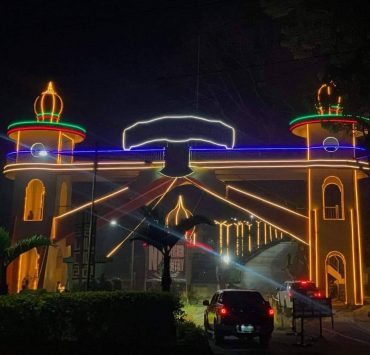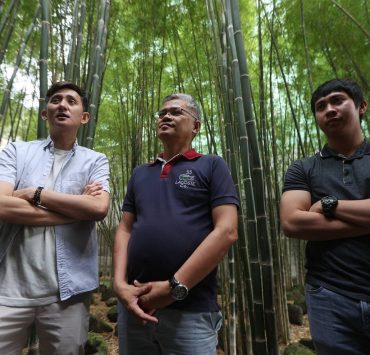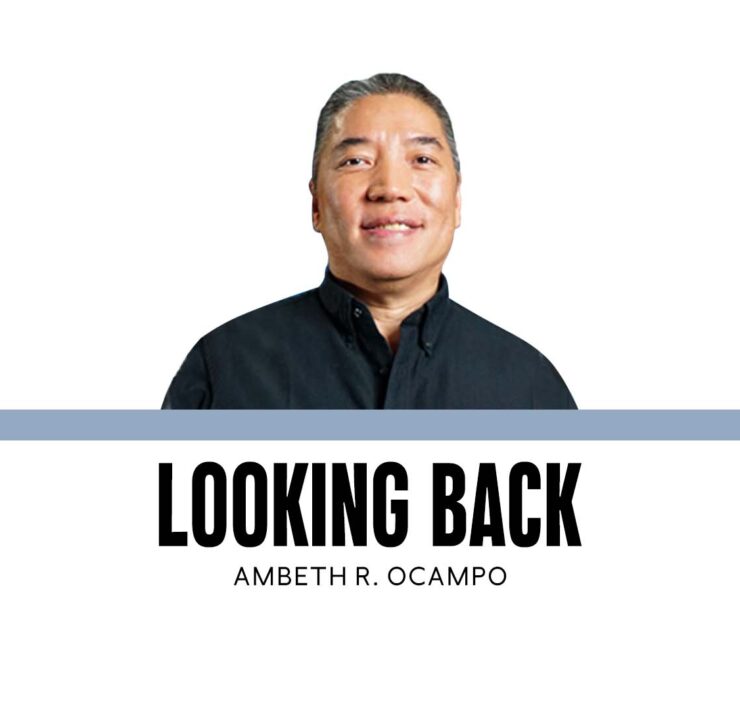After the Manila Galleons
Attendance at an international conference on the Manila Galleon in Singapore (Not Taylor Swift) made me see and notice an object always packed in my hand-carried luggage with my medicines. It is a small bronze image of the Virgin of Antipolo, circa 1900s, presented by La Germinal tobacco company to loyal customers. The Virgin Mary as an endorser of cigars, cigarettes, and smoking? Only in the Philippines.
It may be small, but it often gets me into secondary inspection at airports because X-ray scanners find her suspicious. Last year, at Madrid-Barajas airport, the screener took it out of the bag and was puzzled. I said it was “Nuestra Señora de la Paz y de Buenviaje” (Our Lady of Peace and Good Voyage). Impressed, she showed it to the rest of the screeners and cleared me for boarding. Unpacking in my hotel room in Singapore last Friday, I remembered that the original image venerated in Antipolo accompanied galleons on their Manila-Acapulco-Manila route, protecting vessel, crew, and cargo from shipwreck, storms, and English pirates. Even Rizal pasted a print of the Virgin of Antipolo on the inside of his travel trunk.
Two and a half centuries after the end of the Manila-Acapulco Galleon Trade, Filipino, Mexican, and Singaporean scholars gathered in the Asian Civilisations Museum in Singapore to discuss the Manila Galleon, look back on its long-term effects, its legacies if you will, to discern its continuing relevance in our time. By looking beyond trade in the once fabled port cities of Manila and Acapulco, we focused on the cultural and artistic exchange it generated. Listening to the presentations made me look back at the way I was taught about the galleon trade and how it is still being taught in Philippine classrooms today. Both the exhibition, which closes this weekend, and the conference emphasized how the galleons connected Asia to the Americas, bringing in views from Mexico, China, Japan, and the Americas long absent in textbook Philippine history.
The Manila-Acapulco Galleon Trade is merely a footnote in Philippine textbook history. I found the galleon trade in a K-12 Araling Panlipunan module that dealt with economic policies during the Spanish period. Galleon trade is taught together with the “tobacco monopoly.” The module was an outline and did not provide much detail. Effects of the galleon trade were enumerated as follows: that Spanish colonial officials were so focused on the trade they neglected the development of the provinces; that natives were forced to build galleons without pay, resulting in a disruption to the cycle of planting and harvesting by the natives; building the galleons led to depletion of trees and timber; only Spaniards grew rich from the galleon trade. Four of the five effects of the galleon trade were negative.To reinforce the above, a five-question quiz on the galleon trade and tobacco monopoly required students to write “Yehey!” for positive effects, and “Aray!” for the negative. Both references to the galleon trade in the quiz were negative: Filipinos were made to build the galleons without pay and only the Spaniards benefited from the galleon trade. Other online teaching resources state that when Manila became a significant international trading hub, it became the most important business concern of Spanish settlers since the colonial government had not discovered workable gold mines and failed to establish commercial agriculture and home industries to improve economic life in the colony.
Positive effects of the galleon trade are left out of most teaching modules, with the exception of the introduction of plants and animals from the Americas. Do you know that 15 of the 18 vegetables that make up the nursery rhyme “Bahay Kubo” were imported into the Philippines during the galleon trade? Also sili and singkamas, and the plants that end with ”te” like achuete, kamote, kakawate, sayote, tsokolate, and zapote. Do you know that Filipino tamales and champurrado are known under the same name in Mexico? They use corn rather than rice. Do you know that common Filipino words like “nanay” and “tatay” are of Mexican origin?
Exchange was two-way. Mangoes from the Philippines were introduced to Mexico where they were known as “mangas de Manila.” Filipinos who went to Mexico on the galleons made their own brew or “tuba” from coconut. Mexicans learned the process and used it to make mezcal and tequila. Alejandro Gómez Maganda, governor of the Mexican state of Guerrero from 1951-1954, probably has Filipino roots.
Textbook history focused on resistance to colonial rule, built within a narrative of victimhood, should be updated with a spin on aspects of culture: literature, art, architecture, fashion, food, religion, etc. that should rightfully be revisited as expressions of Filipino agency. Our ancestors were not mere empty vessels, they took on the foreign and made it their own. This is not adaptation but a pattern of resistance. National Artist Kidlat Tahimik disrupts the eye by respelling indigenous into “indio-genius.” It is a concept that encourages Filipinos to rediscover the indio-genius within that was suppressed in colonial times.
Ambeth is a Public Historian whose research covers 19th century Philippines: its art, culture, and the people who figure in the birth of the nation. Professor and former Chair, Department of History, Ateneo de Manila University, he writes a widely-read editorial page column for the Philippine Daily Inquirer, and has published over 30 books—the most recent being: Martial Law: Looking Back 15 (Anvil, 2021) and Yaman: History and Heritage in Philippine Money (Bangko Sentral ng Pilipinas, 2021).


















